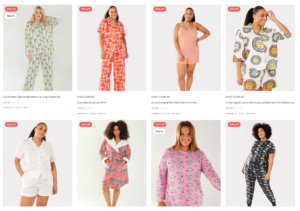By Simon Kvist Gaulshøj, CEO, Adnami
The numbers are in, and they represent good news for digital publishers: global advertising expenditure will grow by 11.2% in 2021, powered by performance-led e-commerce advertising and brand advertising in online video.
That’s the verdict of Zenith’s most recent Advertising Expenditure Forecasts report, which gives digital advertising a 58% share of all global marketing spend this year, compared to 48% in 2019. New money is flooding in, audiences are continuing to migrate online and virtually every metric points upwards, with the exception of static display, down 15%.
In the UK specifically, the numbers are even more dramatic, up 13.5% for 2021. Digital, meanwhile, accounts for a scarcely credible 75% of all ad spend, with further rises predicted for 2022.
The theme is one of recovery – overall, the market is up 6% on its pre-pandemic 2019 peak, or 8.5% in the UK – but between the lines there are other important lessons here. One is that advertising is going to become more expensive, with online video price inflation at 7%. Another is that there is simply going to be a lot more of it around. What does that mean, in practice? It means that brands need to do it well, or else not bother.
Sometimes, the mantra in our high impact sector of the industry hammers the message about outstanding, attention-grabbing formats. And yes, formats that get round our banner-blind defences are invaluable, even indispensable. But as prices rise and attention comes at an ever greater premium, it is also important to issue a reminder of the other part of the equation, and that’s creative.
The value of high impact formats is that they create a canvas for ads that work better and generate stronger results. But they can’t do all the heavy lifting on their own. In other words, a great format can’t save a rotten creative.
As advertisers tool up to revive their businesses, they are seeking to reinflate their margins and consolidate new avenues that were first explored in desperate locked-down times – such as retail partnerships and new direct-to-consumer operations, rocket-fuelled by performance advertising.
They also need to address long-term media issues, like the need to find digital alternatives to make an impact on upper-funnel KPIs as consumers drift away from traditional branding channels. They are looking for awareness and attention, ad recall and consideration, where historically digital display was a tactical instrument for driving towards conversions.
So these are the times to remember that not every high impact ad has a high impact, and we wouldn’t be doing our job if we pretended it did. Research tells us that creative execution contributes 56% of sales generated from digital advertising. Is every ad in a high impact format a good ad? No. Does every ad in a high impact format work? Not necessarily – not if it’s a bad ad.
There is no formula, of course. Creativity doesn’t come in a bottle, but where it does justice to the brand and the canvas on which it is painted, it is unmistakable. Done right, high impact ads command up to 20 times the attention of standard display ads, and studies link attention to effectiveness and better outcomes when it comes to both brand recall and brand preference.
Higher dwell times are associated with a greater likelihood to choose a brand and recall a brand’s advertising, but we also see clear and significant uplifts at low levels of attention.
The fact remains, however, that advertising is more expensive and more competitive than it has ever been. Brands who fail to cut through the ever-increasing noise, fail to find the right balance of creativity and format, might just as well save their money.
High impact ads can amplify the right message far more loudly than their nearest comparable rivals. Get that message right and the world is yours. Get it wrong and the great post-pandemic recovery might just be a thing that happens to other people.









